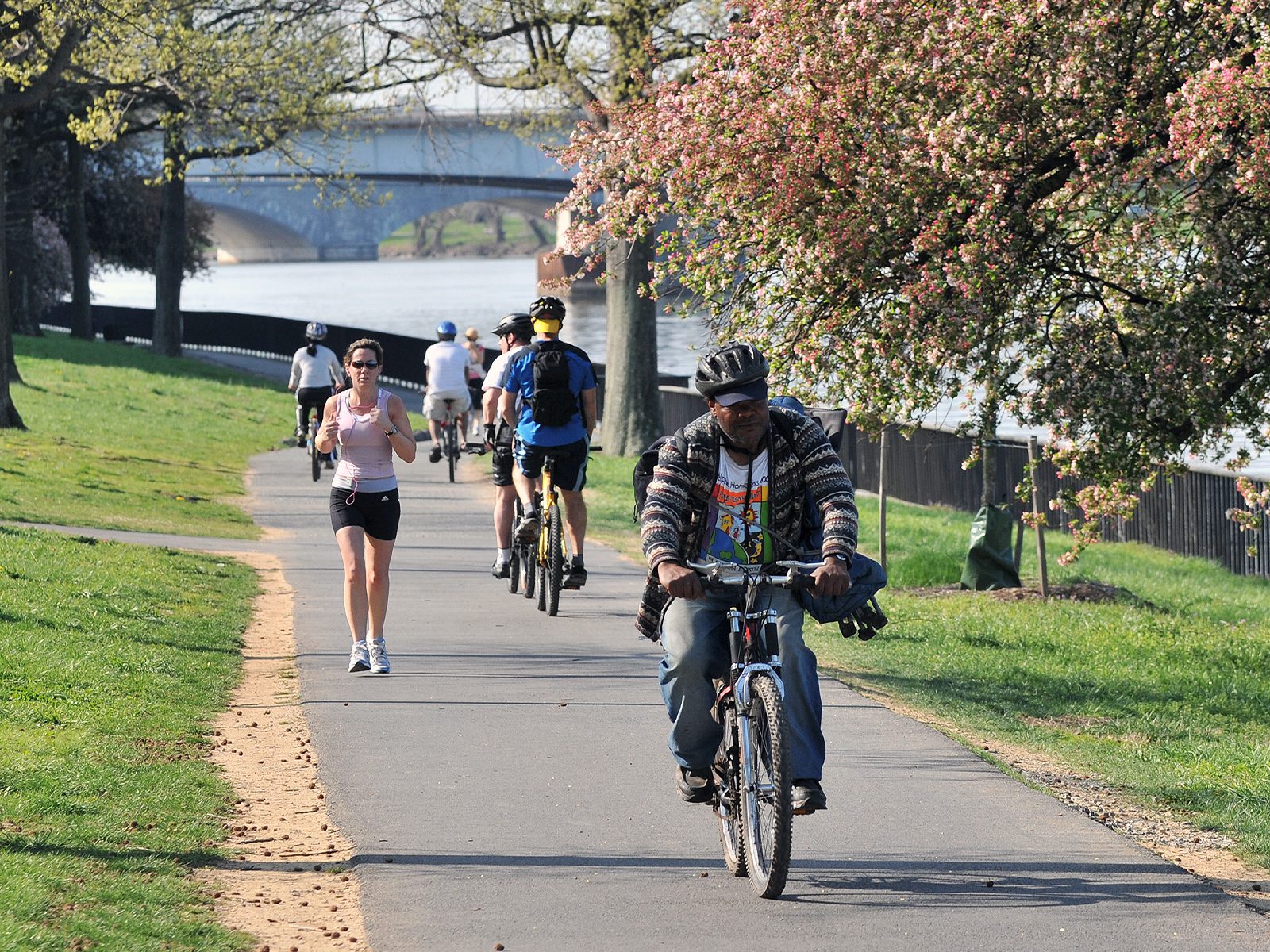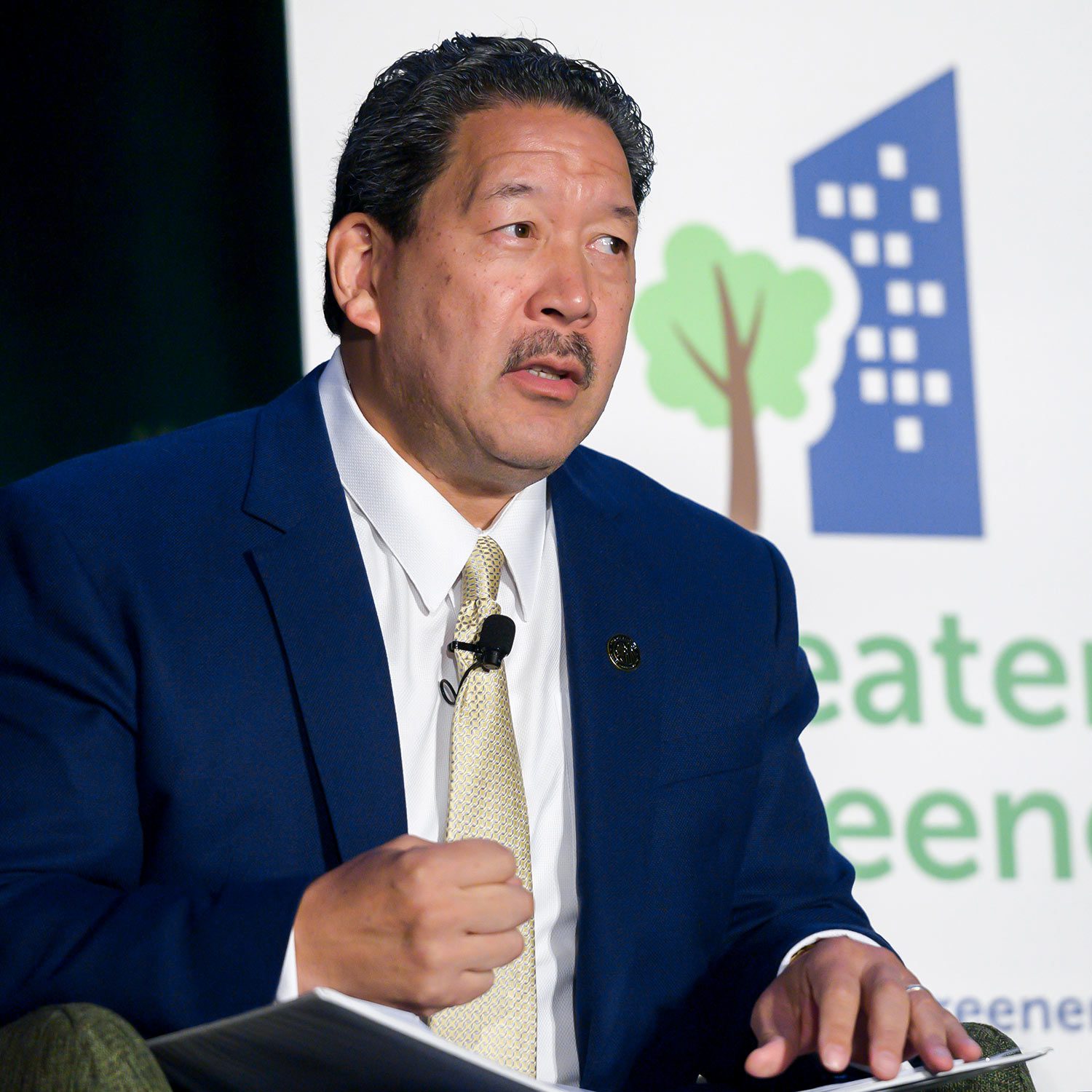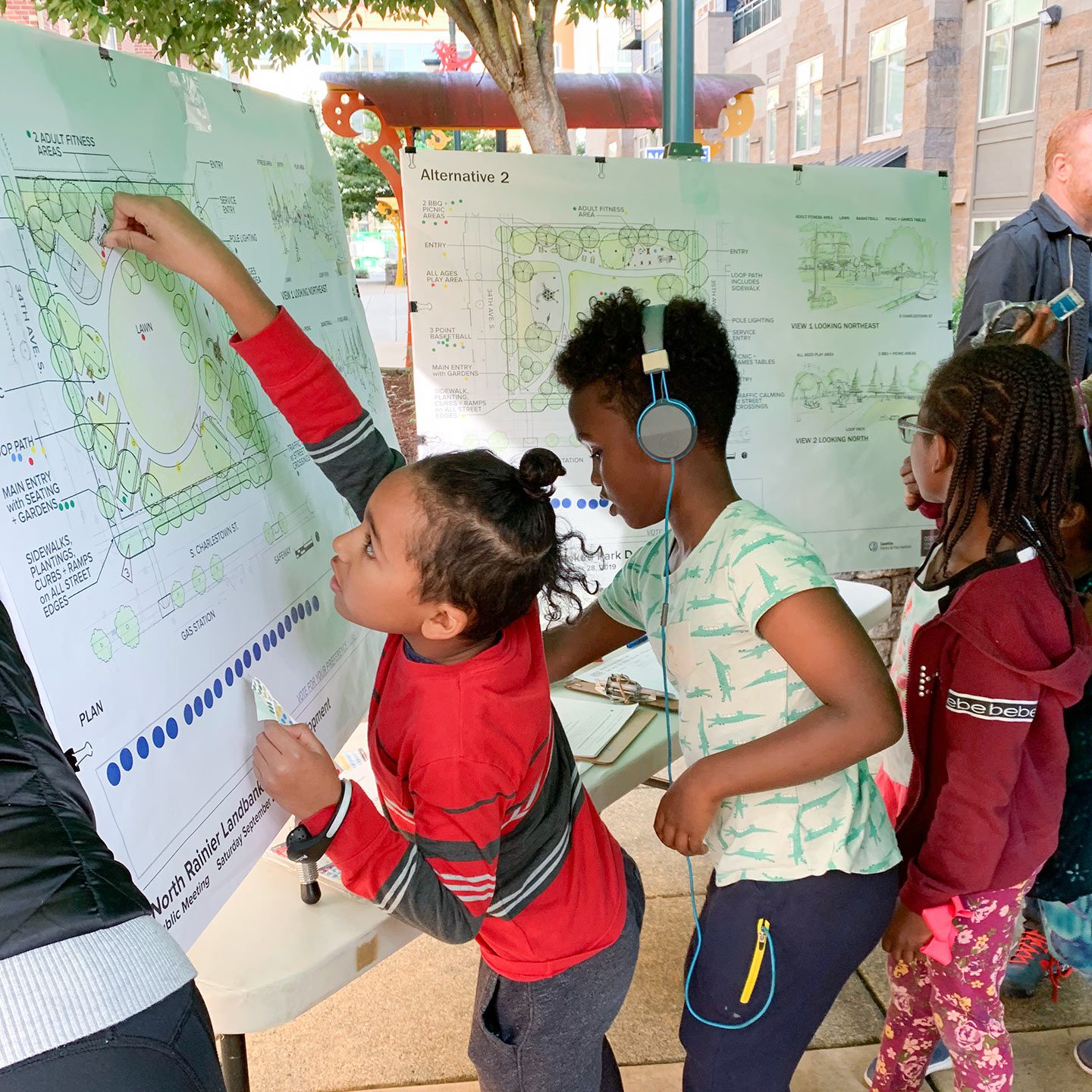The Rainier Valley neighborhood in Southeast Seattle is known as one of the most diverse urban enclaves in the country, home to immigrants and their descendants from Italy, Japan, the Philippines, China, Vietnam, Somalia, Eritrea, Ethiopia, and other countries. It’s also a dense area with little green space and few places for families living in multi-unit buildings, public housing, and senior homes to exercise, play, and gather.
But a new park being created at the North Rainier Landbank Site will help change that, providing an “urban village” park slated to open this summer. A name for the new park is still being chosen, and residents were invited to weigh in.
Thanks to a million-dollar grant from the Outdoor Recreation Legacy Partnership (ORLP), the park at the North Rainier Landbank Site will be created out of long-vacant parcels of land acquired and land-banked over more than a decade through a multi-agency effort involving various city planners, officials, and landscape architects. Established in 2014, the ORLP focuses on providing outdoor recreation in disadvantaged communities within urban areas. The program funds land acquisition, new park development, and the renovation of existing parks.
With Osborn Consulting as the project designer and landscape architect, North Rainier’s new parkland will celebrate the surrounding community’s diversity and vibrancy, including culturally significant decorative motifs chosen through an outreach process conducted in seven languages.

Photo courtesy of Seattle Parks and Recreation.
“Access to parks and open spaces are critical for our youth and building healthy, thriving communities,” said Mayor Bruce Harrell. “This new North Rainier [Landbank Site] will provide new health and wellness opportunities for residents in this incredibly diverse neighborhood, bringing people across all ages and backgrounds together to recreate and enjoy this green space. Seattle Parks and Recreation did an amazing job of acquiring adjacent parcels of land over the years to make this project possible, and I’m looking forward to cutting the ribbon for the park opening just in time for summer.”
An open lawn with a central mound will allow space for unstructured recreation – “a place to throw a frisbee,” as design phase project manager Mike Schwindeller said. About 50 newly planted trees will provide shade and climate benefits. Picnic tables, benches, barbecues, adult fitness and playground equipment, a loop walking trail, and a three-point basketball court serve residents of all ages. The walking path is wide to accommodate large groups, and there’s room for up to 30 tents or canopies for local festivals and events.
“The community told us they really wanted a multi-generational park; we were able to deliver that,” said Seattle Parks and Recreation Communications Strategic Advisor Karen O’Connor. “This is a great design that’s going to serve this neighborhood that’s been growing and growing.”
Starting more than a decade ago, the park district has negotiated to acquire different land parcels in the crowded and growing community. In 2019, they acquired a crucial piece of land on the southwest edge of the park, which fit in like a “Tetris piece,” in the words of Schwindeller. In 2021, they got a final parcel that brought the total size of the new park to 1.2 acres.
“This has been a long time coming, it does not fit the normal time horizon of how we develop parks,” said Schwindeller. “We kept getting opportunities to make additional acquisitions, to work with our property management folks to get additional county and state funding to expand the park beyond what it was. We gradually acquired parcels that had been neglected and undeveloped for many years. The community persevered and was understanding of the adjustments we made along the way with the long-term vision for the park.”
The parks department collaborated with the Seattle Department of Transportation to make pedestrian access improvements on surrounding roads, creating safe and accessible walking routes to the park. New sidewalks, curb ramps, lighting, pedestrian crossings, and bike racks were added, with community outreach helping to determine needs.
Over the years, city planners held multiple community meetings, including in surrounding housing complexes, at a local elementary school, and with representatives of the nearby Safeway grocery store – whose employees can enjoy lunch breaks in the park. There was an open house in the Safeway parking lot and outreach at the Rainier Court Festival.
Residents chose the park’s visual motif by voting on fabric samples representing different cultures, with 66 locals participating and adding some of their own nominations. The process was conducted in Somali, Chinese, Vietnamese, and other languages, reflecting the community’s rich diversity.
Ground was broken in the fall of 2023, with a crucial early step being the labor-intensive removal of invasive knotweed growing to 10 feet tall or higher.

Photo courtesy of Seattle Parks and Recreation.
“The knotweed was completely dominating the site,” said Schwindeller. “The change was so significant, opening up sight lines for people to envision what this space could be like as opposed to this overgrown, weedy tangle.”
Several feet of soil were removed to get rid of weed seeds and roots and “light contamination” in the soil, as production phase project manager Jon Pagan noted. A root barrier in the cleaned-up soil will help prevent weeds and invasive species from breaking through.
The park is built to help mitigate and respond to climate change, with stormwater retention features and trees and drought-tolerant landscaping chosen with a warming climate and resiliency in mind. About 85% of the surface will be permeable, preventing runoff and helping to manage stormwater.
Native and adapted tree species include Eastern redbud, incense cedar, Japanese black pine, grand fir, ginkgo, and vine maple. Flowering and edible plants could include blueberries, daffodils, lavender, witch hazel, and sword fern.
In a 2019 letter to the city design commission, local resident Angela Davis explained the need for the park in the dense, low-income neighborhood.
“Every child should have a safe place to kick a ball, dream farther than their hallway, and maintain regular physical fitness,” Davis wrote. She noted the park would also increase fitness opportunities, well-being, and longevity for the area’s many senior citizens. “North Rainier [Landbank Site] has the potential to build a cohesive diverse community in all areas of cross-cultural dynamics.”

Photo courtesy of Seattle Parks and Recreation.
The City Parks Alliance series on the Outdoor Recreation Legacy Partnership was written by Kari Lydersen. Kari is an assistant professor of journalism at Northwestern University and a Chicago-based journalist and author.
Explore and learn more about the impact of the Outdoor Recreation Legacy Partnership:

Overview Story
The Outdoor Recreation Legacy Partnership program offers park access and all its benefits to urban dwellers nationwide.

St. Paul, MN Story
In St. Paul, ORLP helps a park change with the times, and the community thanks to the Outdoor Recreation Legacy Partnership.

Stamford, CT Story
An urban park embraces its coast in Stamford thanks to the Outdoor Recreation Legacy Partnership.

Mayors for Parks Coalition
Seattle Mayor Bruce Harrell is a member of City Parks Alliance’s Mayors for Parks coalition. The coalition advocates for increased federal funding for urban parks and has been a leader in the campaign to create and fund the ORLP.




